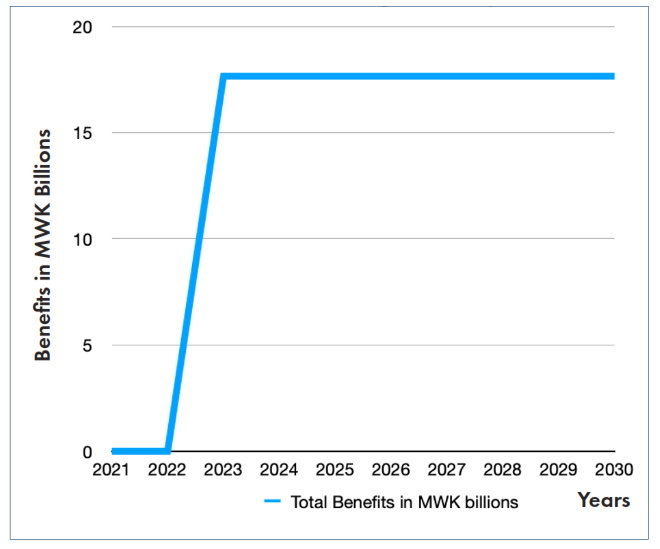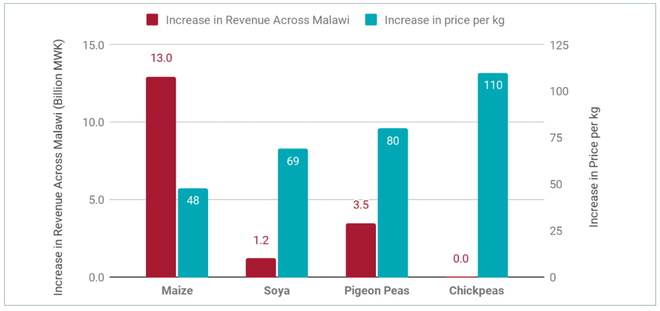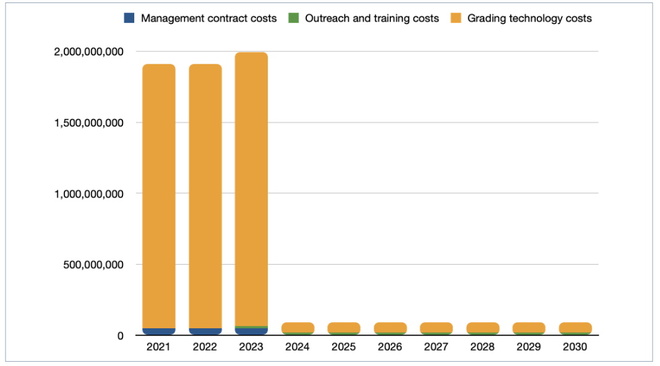Malawi Priorities: Agriculture: Commodity Exchange Reform
Technical Report
Key Messages
- Although the majority of Malawi’s population relies on subsistence rain-fed agriculture for their livelihoods, there are multiple intersecting barriers preventing farmers from accessing formal markets, limiting their income and growth.
- Malawi currently has two commodity exchanges: ACE and AHCX. The two exchanges duplicate efforts, operate inefficiently, are currently poorly structured, and remain underutilized. The poor functioning of key institutions such as these exacerbates broader issues in market coordination and access.
- COMEX reform, the key intervention analyzed in this analysis, yields a benefit-cost ratio (BCR) of 16 – one of the highest BCRs for interventions in the agricultural sector under the Malawi Priorities Project. It could be considered a potential quick win for Malawi within future strategic planning documents.
- The proposed intervention includes a number of components, most notably a merger between the two exchanges, that would deliver efficiencies in storage and operations; investment in grading technology; and a management contract tied to certain performance benchmarks such as:
- Financial stability and transparency
- Established management systems in place
- Use of standardized grading methods
- Helping farmers to form cooperatives (or other models) to operate at scale
- The intervention is expected to require an upfront investment of MWK 5.8 billion over three years primarily for grading technology. After that, the intervention requires an ongoing cost of MWK 91 million per year primarily to maintain the grading facilities as well as for training and outreach. The intervention is expected to yield benefits worth MWK 17.7 billion per year, starting after two years, in the form of improved farmgate prices for farmers.
- The Government of Malawi must take the following actions to facilitate this reform: committing to purchase reserve stocks of maize through the exchange once certain milestones are met; making these purchases while respecting the minimum farmgate prices; and allowing farmers to use the nearest warehouse to their farm to reduce the transportation barrier.
Context
Agricultural commercialization in Malawi is broadly constrained by poor market systems and unorganized farmers. Further still, there is a multitude of other challenges constraining the development of formal agricultural markets in Malawi. According to the World Bank, some of these challenges include:
- Inadequate infrastructure for efficient agricultural marketing;
- Policy incoherencies that negatively affect marketing;
- Nascent farmers’ organizations;
- Inadequate access to credit and poor financial literacy among smallholder farmers;
- Small farm sizes;
- Excessive climate risk, and;
- Reliance on informal rural intermediary vendors, among others.
The COVID-19 pandemic has also introduced additional challenges to the agriculture sector in Malawi. There have been temporarily disrupted supply chains for key production inputs from South Africa and China, though exports from both countries have seen recent improvements as strict lockdown measures have eased. Malawi’s imports were 26 percent lower in April and May 2020 compared to the previous year (World Bank, 2020). There are also higher costs and delays in trade logistics, combined with decreased demand from trade partners. Many programs have worked to address the problem of improving access to formal markets, using a wide variety of intervention approaches. The roster of approaches ranges from providing technical assistance for farmers to increase productivity, facilitating linkages value chain actors, providing farmers with access to market information (such as minimum farmgate prices), training farmers cooperatives and groups, as well as building infrastructure.
Among the most significant overarching issues in the market, coordination is the poor functioning of key institutions, including the unrealized potential of the commodity exchanges (COMEX).
Malawi currently has two commodity exchanges; ACE and AHCX. The two exchanges duplicate efforts, operate inefficiently, are currently poorly structured, and remain underutilized. For example, the two exchanges have different policies related to quality control standards, warehouse receipts, and storage facilities. The exchanges also have difficulty communicating their function to producers and suffer from very thin trading levels. As a consequence, farmers prefer to sell to intermediary traders at low prices, resulting in lost income.
Summary of Findings
The proposed intervention for this analysis is the reform of the two commodity exchanges. This was selected because it has the potential to improve policy and market coordination at a national level, as well as provide a practical avenue for farmer training, storage, and credit systems.
The COMEX reform would involve a multifaceted process with defined milestones. The key elements of the reform would include:
- A merger of the two COMEX into one, including business and policy restructuring. Given the size of the market in Malawi, having two independent commodity exchanges results in inefficient use of resources (such as storage space) and poor coordination.
- Investment in grading technology
- Specifying a number of performance benchmarks that the COMEX would have to meet for the government to purchase maize through the platform, thereby increasing the volume of trade. Benchmarks would include:
- Financial stability and transparency
- Established management systems in place
- Use of standardized grading methods
- Help farmers to form cooperatives (or other models) to operate at scale
The analysis has been conducted assuming that only 10% of total production would be traded through the COMEX.
Increased Revenue for Farmers as Benefits
At present, farmers are typically paid below the minimum farmgate price for their crops when they sell directly to traders at the farm gate. With an efficiently functioning COMEX and stronger coordination among farmers, market access costs are expected to drop, including transport and storage costs.
While no benefits are generated in Years 1 and 2 of the intervention, beginning in Year 3 the intervention consistently generates MWK
17.7 billion in increased revenue for farmers. The benefit results from farmers receiving the advertised minimum farmgate prices - higher than what they receive now. The current gap in-between market prices and farmgate prices are so high, that the intervention is even feasible if only 1% of farmers sell their output through the reformed COMEX.
Figure 1: Increased revenue for farmers who can receive minimum farmgate prices

Figure 2: The primary benefit examined in this model is the increased price paid to farmers for their agricultural commodities. 100% of the benefits expressed are economic benefits.

Additional Government or Donor Investment Required
Overall, 90% of the intervention costs are borne within the first three years of the ten-year program. While the first three years see annual costs hovering near MWK 2 billion per year, after Year 4, this figure drops to MWK 91 million per year and consistently remains there for the remainder of the program. Costs primarily fall into one of three areas: management contract costs; outreach and training costs; and grading technology costs. Among these three, grading technology costs represent between 80 to 98% of the intervention cost per year, as a significant investment must be made in upgrading business structures and COMEX facilities, including grading technologies. The cost parameters are estimated based on conservative estimates of the cost to reform the policies and business practices for the COMEX.
Figure 3

Summary Table
| Intervention | BCR | Beneficiary Group | Investment cost | Benefits |
|---|---|---|---|---|
| COMEX Reforms to incentivize good business practices and maximize value paid to farmers | 16 Excellent (100% economic benefit) | Farmers selling their output through the reformed COMEX | MWK 6.5 billion over a ten-year period | MWK 141 billion over a ten-year period |
Note: BCRs are based on costs and benefits discounted at 8% (see accompanying technical report). BCR ratings are determined on the following scale Excellent, BCR > 15; Good, BCR 5-15; Fair, BCR 1-5; Poor, BCR < 1. This traffic light scale was developed by an Eminent Panel including several Nobel Laureate economists for a previous Copenhagen Consensus project that assessed the Sustainable Development Goals.
Download the full policy brief here.

